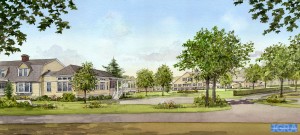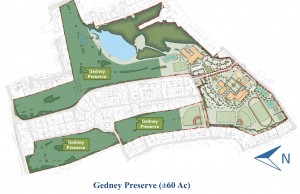French American School promises job creation, economic boost

As opposition to the French American School”™s plan for building a new campus in White Plains persists, school officials hope the prospect of creating 750 new jobs and generating $14.3 million in annual economic benefits will help garner support.
The French American School of New York on Sept. 13 released an economic and fiscal benefits analysis of the proposed consolidation of its three current locations into one central campus, to be located on the 129-acre site of the former Ridgeway Country Club, which the school bought last year for $11 million.
The construction of a new campus is projected to cost $70 million and would result in the creation of roughly 530 construction jobs, according to the report. The analysis also noted that in Westchester County, the construction would result in the creation of approximately 80 jobs in supporting industries and 140 jobs in other local industries resulting from increased household spending.
Once the school is in full operation, it plans to boost its total full- and part-time staff levels to 232, up from 168, to accommodate the expected increase in enrollment from 825 to 1,200 students.
Terence Guerriere, president of the Gedney Association of White Plains, which represents the neighborhoods surrounding the proposed campus, said
“None of this information changes the Gedney Association”™s perspective that it”™s a poor selection of a location for this scope of project.
“In a way, these numbers taken on their face ”¦ confirms that this is a huge project and that this huge project is going to have a significant negative impact that we”™ve stated publicly.”
He said while job creation is always a positive, the project would likely create the same number of jobs in any other location.
The report stated that once the school is open, total economic activity is expected to be roughly $14.3 million annually for the city of White Plains and $22 million for Westchester County. That number includes spending by the school itself, by the staff and by families of children who attend the school.
The analysis was conducted by AKRF Inc., an environmental, planning and engineering consultant based in New York City with offices in White Plains.
“FASNY is a robust economic enterprise that is going to do a heck of a lot more for White Plains than take out 0.5 percent off the city”™s tax roll,” said Mischa Zabotin, chairman of the school”™s board of trustees.
He said that he hopes the report will assuage concerns related to tax revenue that the city of White Plains is losing in the process of the property being taken over by a not-for-profit organization.
“One of the reactions that the community has had was focused on the foregone tax revenue from the change in ownership,” Zabotin said. “I hope that these numbers will open the eyes of those folks who use that argument to try to oppose us.”
Zabotin added that there have not yet been discussions over whether the school will make payments in lieu of taxes to the city of White Plains, saying that it is too early in the process to address any PILOTs.
School officials will not need to wait long to hear from members of the public; the White Plains Common Council will hold a scoping hearing Oct. 3 regarding the school”™s application where the public will be allowed to comment.
Also at the meeting, the Common Council might address whether or not to extend the city”™s open-space moratorium, which would directly impact the school”™s application.
Among other concerns of residents who live in the vicinity of the property are the loss of what is currently unused space where the country club was formerly located and a decrease in property values of homes surrounding the planned campus.
Zabotin countered, saying that past experience shows real estate values benefit from having a highly regarded private school nearby and adding that a large chunk ”“ approximately 60 acres ”“ of the property would remain open space and would be converted to permanent parkland.
“I would go as far as saying that real estate values will benefit from our being there,” he said. “Being on a preserve, something that”™s dedicated and that”™s always going to be a preserve, that”™s a good thing ”¦And frankly, the FASNY community is a pretty economically robust community that I think folks are going to want to be associated with.”
The total economic output of the construction is projected to be $108 million for Westchester and $125 million for New York state. Those numbers are defined as the total cost of production, which includes intermediate goods and services, such as raw materials and transportation, as well as value added, meaning employee compensation and proprietary income.
Tax benefits for the city of White Plains are projected at $1.1 million annually resulting from new sales tax and retained property taxes and at $2.75 million for the White Plains City School District as a result of an expected influx of families whose children attend the school.
At BradleyӪs Desserts and Caf̩ in Larchmont, located near French AmericanӪs Lower School, owner Bradley Smith said he will be sad to see the school depart.
“For us, they were a very good asset to Larchmont, so I think they”™ll be missed in this area more than people realize. A lot of our customer base is that ”“ the French American School and people who come to town because of the French American School.”
